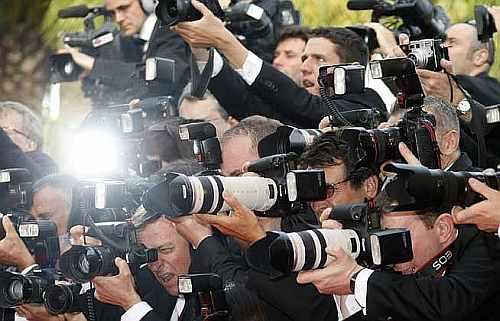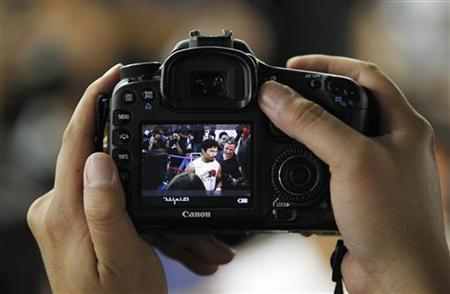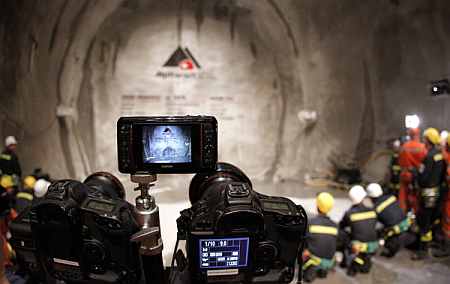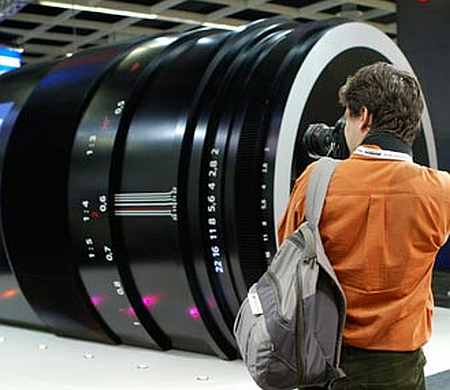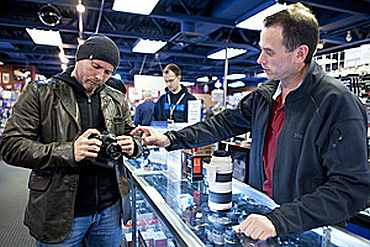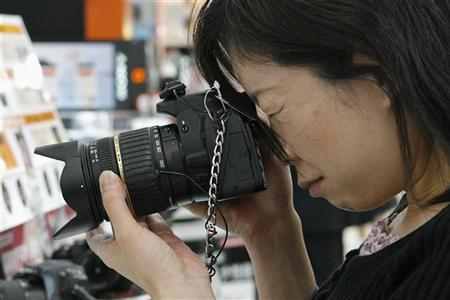 | « Back to article | Print this article |
New to photography? Great tips for an amateur
If photography is your passion and you like to see the world through the lense, the camera is the ultimate device you would like to possess. Here are a few things an amateur should know:
Camera
The fight in recent years has primarily been between Canon and Nikon. Consequently, they remain the safest bet for any amateur photographer to begin with, more so since the lens that you'll pick up will work across each brand's range of camera bodies.
But with camera's costing anything from under Rs 30,000 to over Rs 100,000, it isn't easy to choose -- each comes with its own set of performance parameters, and related strengths and weaknesses.
Click NEXT to read more...
New to photography? Great tips for an amateur
Here's the starter kit:
Canon (all prices from Canon website):
Canon EOS 1100D, Rs 29,990 (with 18-55mm lens)
Canon EOS 550D, Rs 35,995 (body only)
Canon EOS 550D Kit, Rs 39,995 (with 18-55 lens)
Nikon (all prices from Nikon website)
Nikon D3100, Rs 27,250 (body only)
Nikon D3200, Rs 32,250 (body only)
Nikon D5100, Rs 37,450 (body only)
New to photography? Great tips for an amateur
Filters
Filters can manipulate light to help get you that perfect shot which you've imagined in your head, but most often they also afford protection to your lenses.
Again, like most other things in photography, filters come across a wide range, with their utility depending on usage. The following two are rather useful:
UV filter: The price will depend on the diameter of your lens and the brand of the filter, but usually for less than Rs 1,000, you can get your hands on a simple ultra violet (UV) filter that will keep the harsh rays out and more importantly, protect the glass of your lenses.
Click NEXT to read more...
New to photography? Great tips for an amateur
Circular polarising filter: Like the UV filter, they will screw on to your lens but its function of removing unwanted reflections and increasing contrast will do a lot more to your photographs. The price range varies, but the standard ones can be brought for under a few thousand.
Click NEXT to read more...
New to photography? Great tips for an amateur
Storage
Most DLSRs these days are sold with memory cards, which are just fine to get started with. As requirements increase, it's relatively expensive to move up the size and performance ladder.
Similarly, your computer's onboard memory may be enough to deal with your first few sets of photographs, but a good external hard drive will be a useful and reliable way to store your shots.
500GB external hard disks currently cost under Rs 5,000 (Flipkart price).
Click NEXT to read more...
New to photography? Great tips for an amateur
Lens
A lens is what makes a good camera great, or a great camera grotesque. And just like camera bodies, they come in all sizes and prices.
There are some basic lenses, though, that will be enough to fill your first camera bag, and what you buy next should depend on the sort of photographs you enjoy taking:
18-55 mm, f/3.5-5.6 -- Cheap and cheerful, these usually come along with your camera body as the prescribed kit lens. For a few thousand bucks (around Rs 5,000 or so) over the price of the camera bodies, you will get a basic, sturdy lens that should suffice for the initial excitement of shooting flowers, family and sunsets.
Click NEXT to read more...
New to photography? Great tips for an amateur
50mm, f/1.8 -- At only about Rs 6,000, these prime (single focal length) lenses deliver some serious value for money.
Highly-recommended for anyone interested in shooting portraits, the pint-sized 50mm not only work brilliantly in low-light conditions but also give that perfect bokeh (out-of-focus area in an image) in better light.
Click NEXT to read more...
New to photography? Great tips for an amateur
70-300mm, f/4-5.6 -- A basic telephoto zoom lens that most amateur photographers would want or need at some point.
Nikon has the cheapest variant, but Canon and others like Sigma and Tamron have other offerings too, mostly around Rs 10,000. Affordable and light, this is a keeper for those faraway wildlife or sports photographs.
Click NEXT to read more...
New to photography? Great tips for an amateur
Tripods
Some like them, others don't, but a good, lightweight tripod can be a useful addition to your photography kit. It will allow you to shoot without shake in most circumstances, apart from the added advantage of letting amateurs experiment with slow shutter speeds and time-lapse techniques.
The market has a plethora of options but the Manfrotto MKC3-H02 is a particular favourite and can be bought for just over Rs 4,000.
Click NEXT to read more...
New to photography? Great tips for an amateur
Most large Indian cities usually have a street or two designated for camera shops, and a quick stroll there would give you a fair understanding of the prevailing prices.
Also, have a look at online shopping portals like Flipkart which sometimes good deals, particularly for camera accessories. Ideally, make a list of all you need to buy and purchase them together -- they will get you the best discounts, only at physical stores.
Click NEXT to read more...
New to photography? Great tips for an amateur
Bag
All that equipment you are likely to pick-up ideally needs a safe and secure (and water-resistant) bag to be hauled in.
Although most shops will give you a standard camera bag when you purchase a camera kit, few are high-quality and flexible enough to accommodate a handful of lenses, tripod, etc.
Lowepro is the big daddy in this business, but others like Kata, Crumpler and Caselogic have some fine products, too, that may also be able to fit in a laptop. Costs vary according to size.
